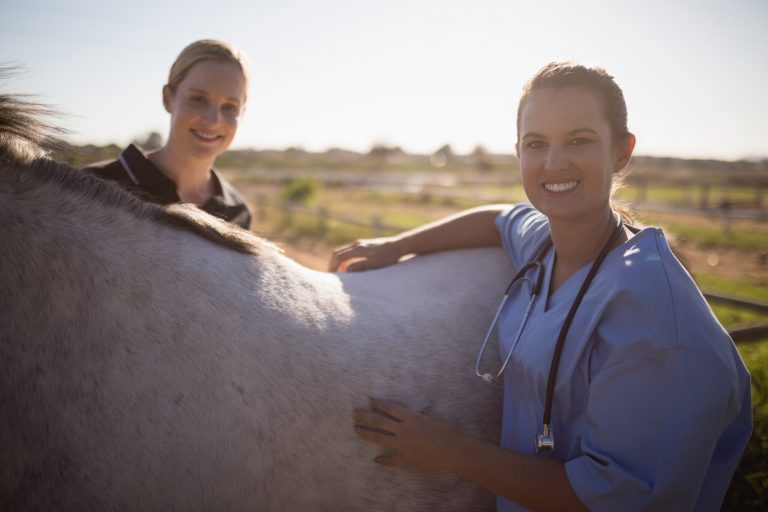
Equine veterinarians routinely radiograph fetlocks when diagnosing lameness. According to Gabrielle Solum, DVM, a third-year Sports Medicine Resident at Colorado State University, however, the severity of radiographic changes in the fetlock does not significantly correlate with lameness in Western performance horses.
During her presentation at the 2023 American Association of Equine Practitioners Convention, held Nov. 29 – Dec. 4, Solum said, “The fetlock undergoes the most range of motion of any joint. In Thoroughbreds, pathology in this joint, such as proximal phalanx (P1) fragmentation, leads to lameness, decreased performance, breakdown, and retirement. But much less is known about the link between fetlock pathology and lameness in Western performance horses.”
Link Between Radiographic Changes and Lameness in Western Performance Horses
Exploring the link between radiographic changes and lameness in Western performance horses, Solum hypothesized that lameness severity would correlate with the severity of radiographic findings and that osteophytes of proximal P1 would be the most common finding. To test these hypotheses, Solum reviewed radiographs from a single private practice over a 10-year period (2012-2022).
The horses underwent traditional lameness examinations, and cases were included in the study if baseline lameness improved more than 70% after intra-articular blocking of the fetlock joint. Lameness, flexion, and effusion grades were recorded, and radiographs were evaluated for the presence, severity, and location of pathology. A boarded equine radiologist assigned each case an overall radiographic score, which Solum’s team compared to the lameness grade to find significant correlations.
Intra-articular blocks of the fetlock were performed on 379 horses, and 173 horses improved by more than 70% after blocking. Complete radiographs were obtained in 101 cases, and radiographs were considered acceptable quality in 90 cases. Mean lameness score in those 90 cases was 2.2 out of 5.
Radiographic Abnormalities and Lameness Grade
In total, 17 radiographic abnormalities were identified in 96.7% of cases. The most commonly observed radiographic abnormalities in the fetlocks included distal cannon bone sclerosis, periarticular osteophytes, soft tissue swelling, P1 sclerosis, and subchondral bone defects.
“No significant correlation between lameness grade and severity of radiographic abnormalities was appreciated,” said Solum. “However, there were weak correlations between lameness grade and P1 sclerosis, subchondral bone cysts, and proximal P1 fissures.”
Types of Radiographic Abnormalities Associated With Increased Lameness
While overall radiographic severity score did not correlate with degree of lameness, the data showed the presence of certain radiographic abnormalities was associated with increased lameness. For example, horses with joint space narrowing, sagittal ridge defects, P1 demineralization, subchondral bone cysts, and P1 fissures had significantly higher lameness grades compared to the overall mean lameness grade, Solum relayed.
The most frequent radiographic findings were consistent with chronic exercise-induced remodeling and degenerative joint disease such as distal cannon bone sclerosis, as well as periarticular osteophytes, proximal P1 sclerosis, and soft-tissue swelling occurring with osteoarthritis.
Final Thoughts
“Finding that the severity of lameness did not correlate with the severity of the radiographic changes was not surprising because human studies also did not find a correlation between pain and radiographic findings,” Solum said.
She therefore concluded, “Western performance with lameness localized to the fetlock likely have radiographic changes, especially chronic exercise-induced remodeling. Although degree of lameness did not correlate with severity of radiographic changes, lameness grade was significantly higher when certain radiographic findings are present, making these of clinical interest in the evaluation of Western performance horses.”
Related Reading
- Causes of Immune-Mediated Myopathies in Horses
- Disease Du Jour: Equine Prepurchase Exams
- 10 Radiographic Prepurchase Abnormalities in Sport Horses
Stay in the know! Sign up for EquiManagement’s FREE weekly newsletters to get the latest equine research, disease alerts, and vet practice updates delivered straight to your inbox.








